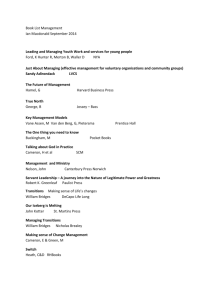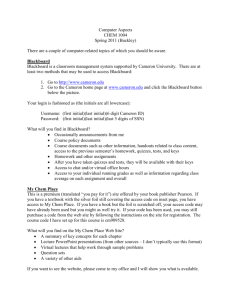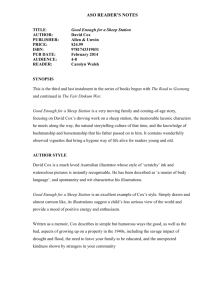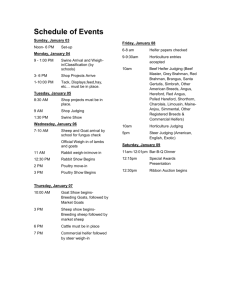Steak of Origin` champ thinks outside the square
advertisement
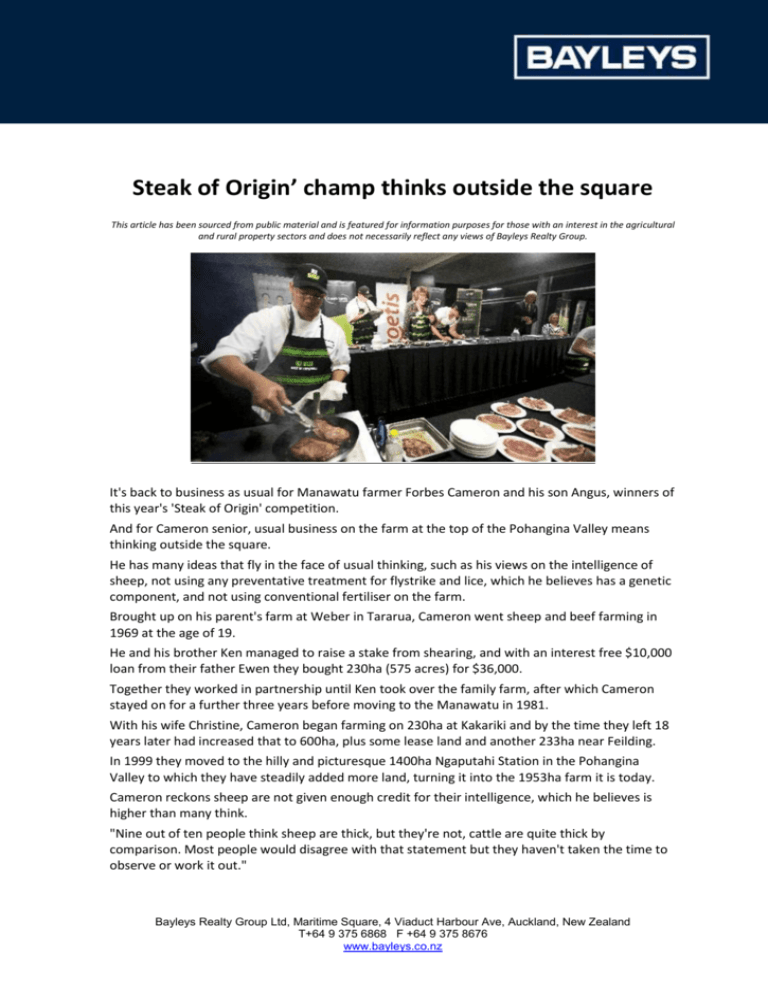
Steak of Origin’ champ thinks outside the square This article has been sourced from public material and is featured for information purposes for those with an interest in the agricultural and rural property sectors and does not necessarily reflect any views of Bayleys Realty Group. It's back to business as usual for Manawatu farmer Forbes Cameron and his son Angus, winners of this year's 'Steak of Origin' competition. And for Cameron senior, usual business on the farm at the top of the Pohangina Valley means thinking outside the square. He has many ideas that fly in the face of usual thinking, such as his views on the intelligence of sheep, not using any preventative treatment for flystrike and lice, which he believes has a genetic component, and not using conventional fertiliser on the farm. Brought up on his parent's farm at Weber in Tararua, Cameron went sheep and beef farming in 1969 at the age of 19. He and his brother Ken managed to raise a stake from shearing, and with an interest free $10,000 loan from their father Ewen they bought 230ha (575 acres) for $36,000. Together they worked in partnership until Ken took over the family farm, after which Cameron stayed on for a further three years before moving to the Manawatu in 1981. With his wife Christine, Cameron began farming on 230ha at Kakariki and by the time they left 18 years later had increased that to 600ha, plus some lease land and another 233ha near Feilding. In 1999 they moved to the hilly and picturesque 1400ha Ngaputahi Station in the Pohangina Valley to which they have steadily added more land, turning it into the 1953ha farm it is today. Cameron reckons sheep are not given enough credit for their intelligence, which he believes is higher than many think. "Nine out of ten people think sheep are thick, but they're not, cattle are quite thick by comparison. Most people would disagree with that statement but they haven't taken the time to observe or work it out." Bayleys Realty Group Ltd, Maritime Square, 4 Viaduct Harbour Ave, Auckland, New Zealand T+64 9 375 6868 F +64 9 375 8676 www.bayleys.co.nz For many years Cameron has looked for signs of that intelligence when considering which sheep should stay on his farm and which should go. He notes which ewes muster easily, find gateways, avoid bogs and find sheltered lambing sites. Those that measure up he keeps and those that don't are culled. Cameron and son Angus also pay little attention to the condition of a sheep's front teeth when deciding whether to buy or keep stock, and don't believe farmers should automatically cull sheep with worn teeth. "At the sale yard agents always look at the front teeth, but it's their back teeth that are important because that's how they chew their cud, the front ones aren't so important they only use those for pulling grass out. "We've got a ewe here still in the flock, born in 2004, she's still in the rotation, still fat. A lot of farmers when they get to their five year olds say 'well, we sell all our five year olds'. "You've got to look at their performance, condition and ability to rear good lambs, so we don't open mouths. "Why cull a sheep that's reared two lambs every year, has good wool, no dags? People cull them simply because of their age. "Have they done the work to see if they will last? We've done the work and they do, a small percentage of them will live until they are 10 or 12 years old." Cameron senior was one of the first farmers to experiment with hogget lambing and now will put hogget's as small as 28kg to the ram for 21 days. Hoggets in the commercial flock lamb at 45 to 60 percent and in the recorded flock at around 100 percent. Apart from at tupping and lambing, the two flocks run together. "They all get the opportunity but we don't cull them if they don't take the ram. Most of the socalled experts will tell you that they should be a minimum of 40kg going to the ram, which we don't agree with." Almost all of the sheep are romneys, with approximately 400-500 growbulks, a texel-romney-poll dorset composite created for their high bulk wool and which are also outstanding meat producers. Since 1971 Cameron has been recording survival, fertility, growth, dags, and meat and wool traits. In 1991 he began to study worm resistance. One of the reasons he moved to the steep, exposed hills of Ngaputahi was to challenge the ewes on harder country. Recorded ram lambs on the farm also have to cope with a challenge not many farmers would be prepared to put their sheep through. After getting an initial weaning drench they are deliberately exposed to parasites by putting them back on the pasture they were born on. He and Angus then monitor their faecal egg counts. Those with low counts are noted, and if they are also high in other desirable traits, they are kept to mate as hoggets with both flocks. Cameron admits when he started this some years ago, people thought he was mad, but he says it's been worth it. Today their sheep need only two or three drenches in their lifetime. "We don't do any preventative work for fly strike or external parasites. All sheep that are blown are culled. The sheep have lice, but with the good sheep it doesn't affect them so we don't do any preventative work for fly or lice." For more than 30 years he has been using an ultrasound scanner on their ram hoggets 12th rib to get an overall picture of muscle on the animal. Cameron says once again people laughed at him, but says it made sense to him to sound out which animals were most likely to be more profitable, and to breed more of them. Bayleys Realty Group Ltd, Maritime Square, 4 Viaduct Harbour Ave, Auckland, New Zealand T+64 9 375 6868 F +64 9 375 8676 www.bayleys.co.nz "It's part of our drive to breed a ewe that produces fast growing lambs. Our aim is to have ewes that get to 55-60kg as soon as possible that will then produce twins or triplets that grow quickly to 40kg each." When it comes to his cattle Cameron places a lot of importance on genetics to successfully breed a docile animal that will produce high quality meat. After several years breeding angus and salers, Cameron has increased his number of angus which he says have a huge worldwide genetic base. "The saler genetic base is very narrow and it's a lot harder to make progress genetically with a small breed numerically than it is with a large gene pool. "The reason for the increase in angus was simply it is easier to make genetic improvements. "Some of the genetics that are good in other country's don't suit New Zealand, so you've got to do quite a bit of experimentation and breeding to find which ones have got the guts to handle our hill country conditions. With the angus I can do that." Cameron says all his cattle are placid and quiet and were bred with docility in mind, something he believes contributed to the tenderness of their winning steak at this year's 'Steak of Origin' competition Source: Stuff.co.nz Bayleys Realty Group Ltd, Maritime Square, 4 Viaduct Harbour Ave, Auckland, New Zealand T+64 9 375 6868 F +64 9 375 8676 www.bayleys.co.nz
